Categories
Latest Updates
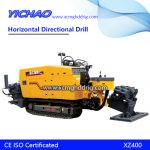
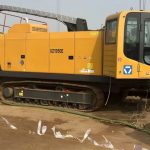
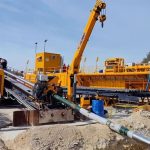
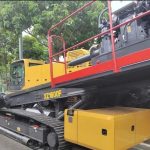
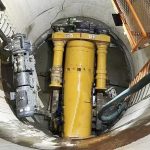
The horizontal directional drilling method is a technique that uses drilling equipment installed on the ground to drill into the formation at a small incident angle relative to the ground to form a pilot hole, and then expand the pilot hole to the required size and lay the pipeline. Compared with other non-excavation technologies, horizontal directional drilling technology has the advantages of fast construction speed, low construction cost, and less environmental damage, and is widely used in various fields of engineering. Today, when the horizontal directional drilling technology is becoming more and more mature, my country has formulated relevant design and construction specifications and standards. Therefore, the technology has been valued by government departments and has achieved good social and economic benefits.
Section 5.1.7 of the “Code for Design of Oil and Gas Pipeline Crossing Engineering” GB50423-2013 stipulates that “directional drilling should not be used to cross the pebble layer, loose sand or coarse sand layer, gravel layer and broken rock layer. When the soil inlet and outlet pipe section passes through When a certain thickness of pebble or gravel is formed, measures of casing isolation, grouting consolidation, and excavation and replacement should be adopted.” The regulations of the specification give the geological conditions for horizontal directional construction. Interpretation from an angle, and determine the impact of engineering geological conditions on the horizontal directional drilling construction, I hope this article can provide a reference for the future horizontal directional drilling design and construction.
Geotechnical engineering survey is an important method to obtain engineering geological conditions and the properties of rock and soil. Therefore, geotechnical engineering survey is the foundation of all pipeline engineering design and construction. Engineering activities of different types and scales will have varying degrees of impact on the geological environment; conversely, different geological conditions will bring different effects to engineering construction.
Horizontal directional drilling is to use a horizontal directional drilling rig to drill the pilot hole first, then expand the borehole to the designed hole diameter, and finally drag the pipeline back to complete the pipeline laying. All the rock and soil that are not conducive to drilling guidance, hole formation or hole consolidation The body may have a negative impact on the horizontal directional drilling crossing project. Generally, the stratum with greater negative impact is defined as the stratum not suitable for the construction of horizontal directional drilling projects, and the stratum with certain negative impacts that can be eliminated or reduced by taking measures is defined as the general adaptive stratum, and the negative impact is more The small strata are defined as adaptive strata.
Medium-hard-hard clay and silt, hard clay and strongly weathered shale, medium-tight sand, weathered rock or strong cemented formation have good porosity and solid porosity, so they are all ideal crossing layers. In the design, the lines and tracks should be placed in the above-mentioned stratum as much as possible; while the loose-dense sand and gravel layer, loose-dense gravel layer, containing a lot of boulders, boulders or obstacles, the stratum has poor porosity. There is a greater risk of hole wall instability, which is not conducive to horizontal directional drilling to cross, and should be avoided as much as possible when designing routes and trajectories.
Generally speaking, clay, silty clay, and silty cohesive arable soil belong to the clay soil layer. After the pores are formed, these soil layers can maintain the stability of the pore wall through their own structural characteristics; Coarse sand is a weakly cemented formation, and the internal cohesion of these formations is very small. When the drill or reaming head passes through the above formation, as long as the borehole is filled with mud, the hole wall can be well maintained. However, if coarse granular materials (gravel, pebbles, large pebbles) are involved in the construction of horizontal directional drilling, it will cause a series of engineering problems. Potential risks include: instability or collapse of the borehole during drilling , And the resulting sticking; the drilling fluid leaks into the formation; the drilling fluid leaks and the mud appears on the surface. Therefore, when there is a certain thickness of pebble layer at the entry and exit section of the trajectory, measures such as casing, geological improvement, and excavation can be used to lay the horizontal directional drilling pipeline. In addition, the location of bad formations can be determined based on survey data, and emergency additives can be added to the drilling fluid to ensure the stability of this part of the formation.
